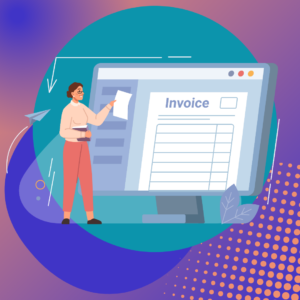We’ve all heard the saying that setting goals is the key to success. It makes sense – making progress without a destination in mind is almost impossible.
But despite the importance of goals, as much as 90% of businesses fail to reach their strategic goals. If goals are so important, why are so many businesses failing to execute them correctly?
One major stumbling block is setting overly ambitious goals that aren’t based on available data. This makes your technology roadmap less valuable and negatively impacts stakeholder buy-in, future spending, and team morale.
In this post, we’ll outline effective ways to set better goals for your technology roadmap projects and show you how to measure returns from completed initiatives.
Define Key Performance Indicators
Your technology roadmap goals should be tied to your company’s key performance indicators (KPIs). These differ between businesses, but common ones include:
- Productivity gains
- Cost reductions
- Revenue increases
You might also like to focus on customer retention improvements or quality metrics. But whatever your goals are, they should be clearly defined to make setting goals for each technology initiative much easier.
Establish Baselines Before Projects
Before you can project goals on a technology initiative, you need to figure out your benchmark KPIs pre-implementation. Having this established baseline helps you set realistic goals for improvement and allows you to better measure progress.
Your baseline KPIs rely on historical data, so gather information from the previous periods (or years) to set your baseline. This could be previous sales data, costs, or revenue.
Bonus Tip: Ensure you understand the variables. For example, if you gather revenue data and notice a significant spike or dip during one month (or years in the case of COVID-19), factor those variables into your projections. Don’t let rogue variables skew your baseline KPIs during this research phase.
Collect Post-Project KPI Data
Once you have your baseline KPIs, you can collect post-project KPI data to analyze results.
For example, if your KPI is cost savings, analyze hard savings from licensing optimizations or software improvements. Have you achieved a noticeable reduction in costs?
Similarly, if your KPI focuses on customer retention, you could survey users to assess user satisfaction improvements resulting from delivered projects.
These post-project reviews will show if your initiatives are tangibly hitting your KPIs.
Correlate Impacts to Roadmap Objectives
Now, it’s time to assess whether your results correlate to your roadmap initiatives. You should have measurable goals within your roadmap, so you should be able to tell whether your initiatives reached the set milestones.
For example, if you are focusing on productivity increases, you might aim to achieve 10% faster order processing or job completion rates. At this point, you can note whether your initiatives achieved that percentage increase, fell short, or exceeded expectations.
If your project did fall short, it indicates that your goals are overly optimistic and need to be reassessed for the future.
Calculate Quantitative ROI
Decision-makers like hard numbers. So, translate the data you’ve gathered into dollars earned, factoring in hard savings and income increases.
The quantitative ROI is essential for securing future funding and continued support from stakeholders and decision-makers and shows that your goals are realistic and achievable.
Qualify Intangible Benefits As Well
Of course, not every technology roadmap initiative will have a quantifiable ROI; some will provide intangible benefits that still benefit the company. These could include improved collaboration, better decision-making, higher job satisfaction, etc. Remember that it’s important to measure intangible benefits with surveys and other methods.
Turn these intangible benefits into percentage increases wherever possible to highlight the benefits of your technology roadmap goals.
Socialize Successes Organizationally
Once you’ve created a succinct report highlighting your roadmap’s goals and success metrics, spread the findings throughout the company to gain continued funding and support.
Your report should show the tangible and intangible results of the previous projects and highlight the initiatives you have planned to replicate and build on the success.
Conduct Regular Reviews for Sustained Gains
The easiest way to ensure your goals are realistic and on track is to conduct regular annual, bi-annual, or quarterly reviews. This will ensure the benefits don’t depreciate over subsequent years and give you a chance to reorient if goals are being missed.
Include key stakeholders, managers, and well-connected users in these reviews to get insights into whether the initiatives work and if improvements or adjustments should be made.
Without regular reviews, it’s easy for technology projects to get off track, which is a key reason why companies often fail to achieve strategic goals.
Your Next Step
Setting realistic, achievable goals for your technology roadmap project helps your business hit key milestones easier, secures future funding, and garners ongoing support from decision-makers.
But the goals set out in your technology roadmap must be achievable, realistic, and closely aligned with your company’s overall objectives. The best way to check whether your goals are realistic and achievable is to talk with someone that has delivered similar projects before. A simple conversation with someone with relevant experience can help you validate your goals, learn what worked, and hear about what went wrong and why. Surprises are rarely viewed positively by your stakeholders; so, it’s wise to learn from the experience of others before you launch into your roadmap projects.
Need Help Evaluating
your Current Inventory Systems?
Visit our directory of software consultants in the StackPlan Consultant Directory. Vetted consultants are ready to support your business needs.








